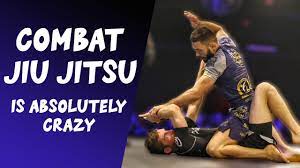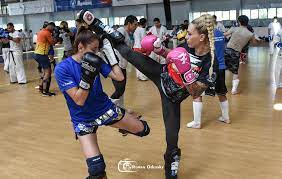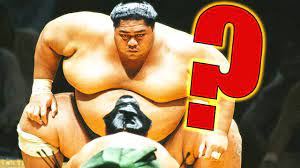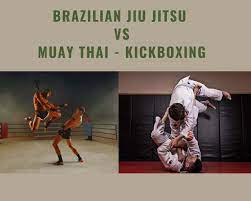Combat Jiu Jitsu: Unleashing the Power of Ground Fighting
Introduction
In the world of martial arts, combat jiu jitsu has emerged as a captivating discipline that combines the principles of Brazilian Jiu Jitsu (BJJ) with elements of striking. This dynamic combat sport has gained significant popularity in recent years, captivating both athletes and spectators alike. By integrating ground fighting techniques with open-handed palm strikes, combat jiu jitsu offers a unique and thrilling experience. In this article, we will delve into the intricacies of combat jiu jitsu, exploring its origins, training methods, key techniques, and the benefits it offers to practitioners.
1. The Origins of Combat Jiu Jitsu
Combat jiu jitsu finds its roots in the ancient martial art of Brazilian Jiu Jitsu. Developed by the Gracie family in Brazil, BJJ focuses on ground fighting techniques and submissions. Over time, combat jiu jitsu evolved to incorporate palm strikes, allowing practitioners to strike their opponents while on the ground. This adaptation added an extra layer of realism and excitement to the sport.
2. The Fundamentals of Combat Jiu Jitsu
At its core, combat jiu jitsu revolves around the concept of utilizing leverage, technique, and strategy to overcome physically stronger opponents. The sport emphasizes the importance of ground fighting, where practitioners aim to control their adversary and execute various techniques to gain an advantageous position. By incorporating striking techniques, combat jiu jitsu introduces an additional element of surprise and intensity.
3. Training Methods and Techniques
3.1. Positioning and Control Techniques
One of the key aspects of combat jiu jitsu is mastering positioning and control techniques. These include achieving dominant positions such as mount, side control, and back control. By skillfully maneuvering and controlling their opponent, combat jiu jitsu practitioners can effectively nullify their adversary’s offense while setting up their own attacks.
3.2. Striking Techniques in Combat Jiu Jitsu
Unlike traditional Brazilian Jiu Jitsu, combat jiu jitsu allows practitioners to strike their opponents using open-handed palm strikes. These strikes are effective in close-quarters combat and can be utilized to create openings, disrupt the opponent’s balance, and transition to advantageous positions.
3.3. Submissions and Chokes
Submissions and chokes are integral components of combat jiu jitsu. Practitioners learn a wide array of joint locks, strangles, and chokes to force their opponent into submission. By expertly applying these techniques, combat jiu jitsu fighters can secure victories without causing significant harm to their opponents.
4. The Benefits of Combat Jiu Jitsu
4.1. Physical Fitness and Conditioning
Engaging in combat jiu jitsu provides a comprehensive workout that enhances physical fitness and conditioning. The sport promotes strength, flexibility, cardiovascular endurance, and overall body awareness. Regular training sessions can improve muscular strength, endurance, and promote weight loss.
4.2. Self-Defense and Personal Protection
Combat jiu jitsu equips practitioners with practical self-defense skills. By mastering the art of ground fighting and incorporating striking techniques, individuals can effectively defend themselves in real-life situations. The ability to control and neutralize an assailant is a valuable asset for personal protection.
4.3. Mental and Emotional Well-being
Participating in combat jiu jitsu offers numerous mental and emotional benefits. The sport builds self-confidence, discipline, and resilience. It provides an outlet for stress and anxiety while improving focus, concentration, and problem-solving abilities. Additionally, the supportive community within combat jiu jitsu fosters camaraderie and personal growth.
5. Competitions and Events in Combat Jiu Jitsu
Combat jiu jitsu has gained considerable traction as a competitive sport. Various organizations host events and tournaments, attracting skilled athletes from around the world. These competitions showcase the skill and technique of combat jiu jitsu practitioners, fostering growth and innovation within the discipline.
6. Safety Precautions and Rules
To ensure the well-being of participants, combat jiu jitsu competitions have specific safety rules in place. These rules regulate striking techniques, prohibited actions, and permissible targets. Protective gear such as mouthguards, groin protectors, and padded gloves are often mandatory to minimize the risk of injuries.
7. The Future of Combat Jiu Jitsu
Combat jiu jitsu continues to evolve and grow in popularity. As more practitioners and enthusiasts embrace this dynamic martial art, advancements in training methods and techniques are likely to occur. The future holds exciting possibilities for combat jiu jitsu, with potential developments in professional leagues, global expansion, and increased mainstream recognition.
Conclusion
Combat jiu jitsu offers a thrilling fusion of ground fighting and striking techniques. It combines the effectiveness of Brazilian Jiu Jitsu with the excitement of open-handed palm strikes, creating a unique combat sport. With its physical, mental, and self-defense benefits, combat jiu jitsu attracts individuals from diverse backgrounds. Whether you aspire to compete or simply want to improve your fitness and learn self-defense, combat jiu jitsu provides a rewarding journey of personal growth.







